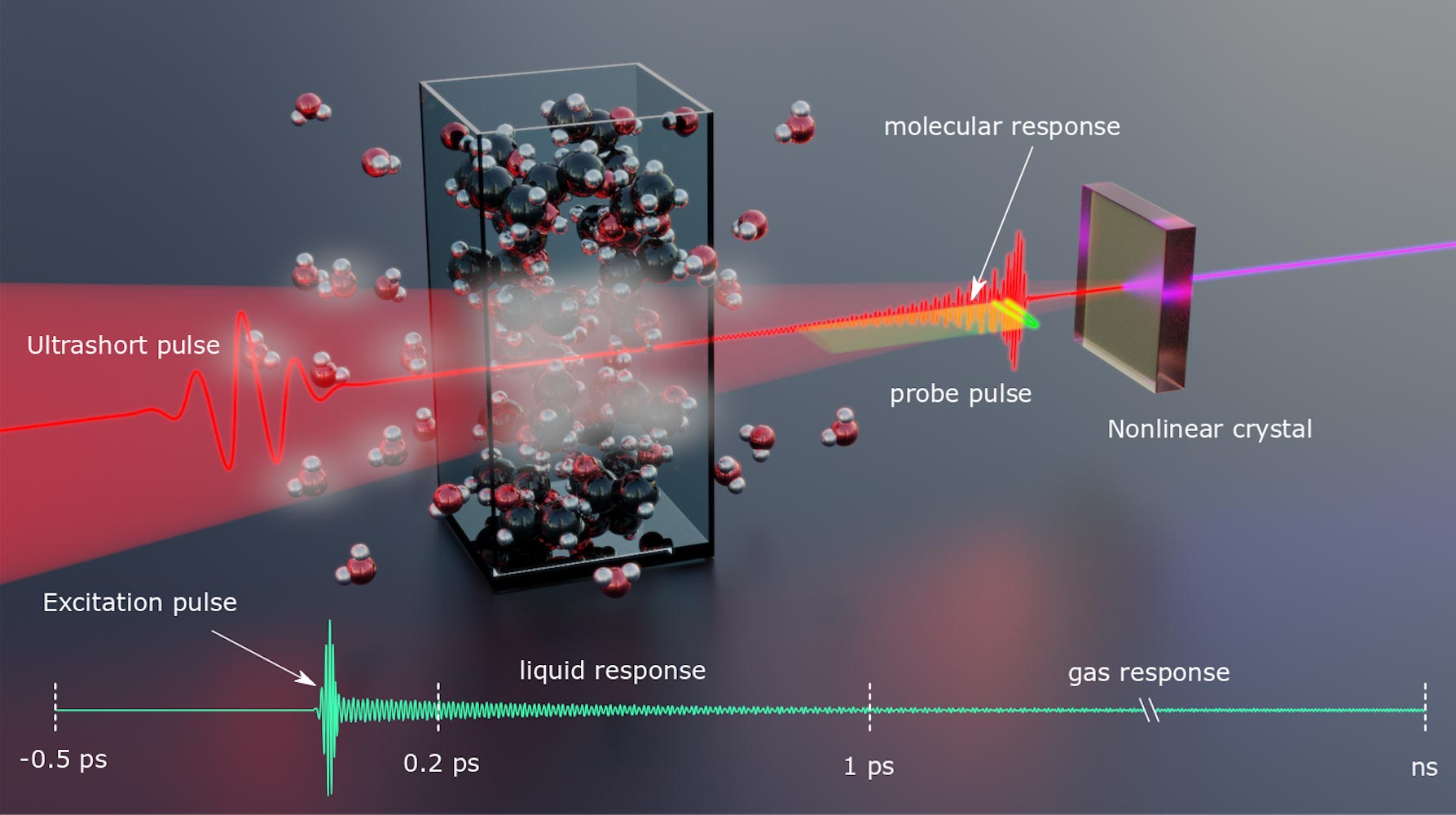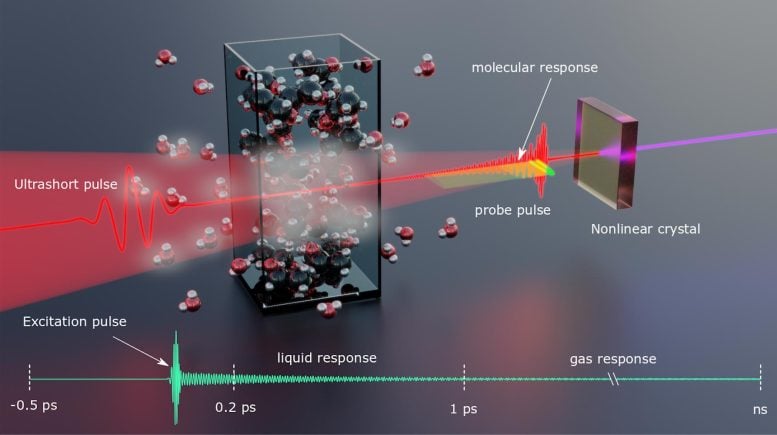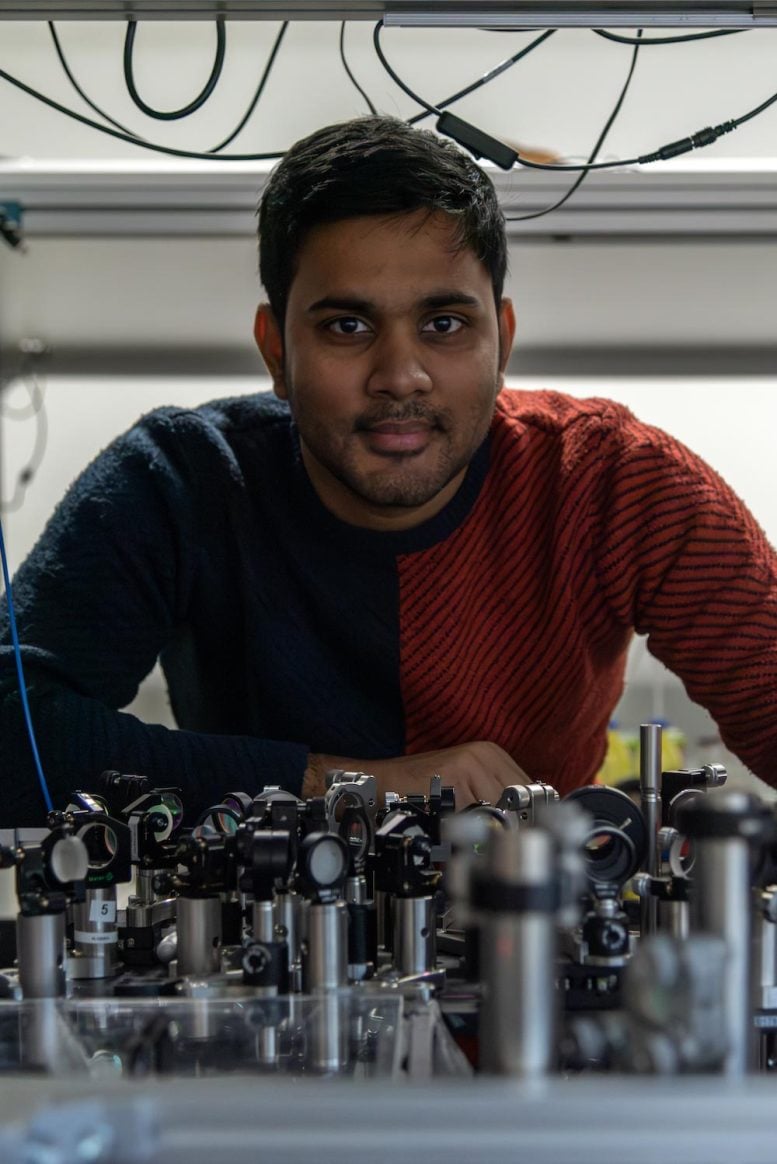

A new technique called ‘femtosecond-fieldoscopy’ developed by the Max Planck Institute enables the precise detection of biomarkers in minute liquid quantities using ultrashort laser pulses.
This method provides a clear molecular ‘fingerprint’ for identifying specific molecules and opens up possibilities for advanced biomedical research and applications.
Breakthrough in Biomarker Detection
In a groundbreaking development for biomarker detection, researchers at the Max Planck Institute for the Science of Light have introduced a new technique known as ‘femtosecond-fieldoscopy’. This method allows for highly precise measurement of tiny liquid quantities, down to the micromolar level, with exceptional sensitivity in the near-infrared spectrum. This advancement opens up exciting possibilities for label-free bio-imaging and detecting target molecules in aqueous environments, with promising applications in biomedical science.
Ultrashort laser pulses can cause molecules to vibrate, like how a quick tap makes a bell ring. When excited by these brief light pulses, the molecules generate a signal known as ‘free-induction decay’ (FID), which contains valuable information about the molecules. This signal, lasting as little as a trillionth of a second, provides a distinct ‘fingerprint’ of the molecule. Femtosecond-fieldoscopy improves the detection of this signal by separating it from the laser pulse itself, making it easier to observe the molecule’s response without interference. This breakthrough allows scientists to identify specific molecules with exceptional accuracy, enabling cleaner, interference-free detection of biological markers.
As a proof of concept, the researchers demonstrated the ability to measure weak combination bands in water and ethanol at concentrations as low as 4.13 micromoles, showcasing the technique’s precision and potential.

Advancements in Ultrafast Pulse Measurement
At the heart of this technique is the creation of high-power ultrashort light pulses, achieved using photonic crystal fibers filled with gas. These pulses, compressed to nearly a single cycle of a light wave, are combined with phase-stable near-infrared pulses for detection. A field detection method, electro-optic sampling, can measure these ultrafast pulses with near-petahertz detection bandwidth, capturing fields with 400 attoseconds temporal resolution. This extraordinary time resolution enables scientists to observe molecular interactions with incredible precision.
“Our findings significantly enhance the analytical capabilities for liquid samples analysis, providing higher sensitivity and a broader dynamic range,” said Anchit Srivastava, PhD student at the Max Planck Institute for the Science of Light. “Importantly, our technique allows us to filter out signals from both liquid and gas phases, leading to more accurate measurements.”
Hanieh Fattahi explains: “By simultaneously measuring both phase and intensity information, we open new possibilities for high-resolution biological spectro-microscopy. This research not only pushes the boundary of field-resolved metrology but also deepens our understanding of ultrafast phenomena and has potential applications across various fields, including chemistry and biology, where precise molecular detection is essential.”
Reference: “Near-petahertz fieldoscopy of liquid” by Anchit Srivastava, Andreas Herbst, Mahdi M. Bidhendi, Max Kieker, Francesco Tani and Hanieh Fattahi, 21 October 2024, Nature Photonics.
DOI: 10.1038/s41566-024-01548-2